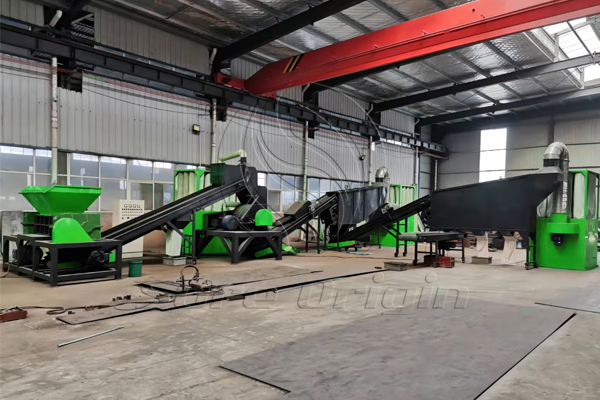With the development of society and the improvement of people's awareness of environmental protection, waste processing and resource recycling have become an important task. In the recycling of waste plastics and waste aluminum, aluminum-plastic recycling separators are widely used as an efficient and environmentally friendly equipment. This article will introduce the operating principle of the aluminum-plastic recycling separator and analyze its role in waste recycling.
The aluminum plastic recycling separator is a piece of equipment specially used for the separation and recycling of waste plastics and waste aluminum. Its operating principle is mainly based on the differences in physical properties of materials, and it achieves effective separation of waste plastics and waste aluminum through a series of process steps.
First, the mixture of waste plastic and waste aluminum enters the aluminum plastic recycling separator through the feeding system. This step usually involves equipment such as conveyor belts, vibrating screens, etc., used to evenly feed the mixture into the processing area of the separator.

After entering the processing area, the aluminum plastic recycling separator effectively separates waste plastic and waste aluminum through its unique physical separation technology. This technology mainly relies on the differences in density, size, shape, etc. between waste plastic and waste aluminum. Usually, the aluminum plastic recycling separator uses air flow separation technology. By adjusting the speed and direction of the air flow, the waste plastic and waste aluminum are subject to different resistances in the air flow, thereby achieving the separation of the two.
During the air flow separation process, scrap aluminum usually encounters greater resistance due to its greater density and is thus concentrated into one area, while waste plastic is blown to another area due to its lightness. This separation method effectively achieves the preliminary separation of waste plastic and waste aluminum.
After separation, waste aluminum and waste plastic enter different collection systems respectively. Scrap aluminum is usually transported to special collection bins through conveyor belts or other conveying equipment, while waste plastics are collected centrally through suction devices or other collection systems. This allows the two to be effectively separated, creating conditions for subsequent processing and recycling.
The operating principle of the aluminum-plastic recycling separator not only achieves efficient separation, but also has a certain degree of automation. Through sensors, control systems and other equipment, the aluminum plastic recycling separator can intelligently regulate according to the properties of the materials to ensure the accuracy and stability of separation. This makes the operation of the equipment more convenient, reduces the difficulty of operation, and improves production efficiency.
Generally speaking, the operating principle of the aluminum-plastic recycling separator is based on airflow separation technology. It takes advantage of the differences in physical properties of waste plastics and waste aluminum to achieve effective separation of the two through a series of process steps. Its high efficiency and environmental protection make it play an important role in the field of waste recycling, making positive contributions to the effective utilization of resources and environmental protection.
 English
English


